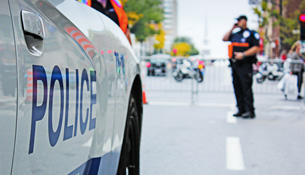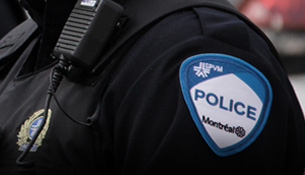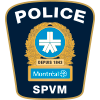
Designer Drugs
Like all other illegal drugs, designer drugs are subject to Canadian laws. Possession, trafficking, or possession for the purposes of trafficking, production, importing and exporting designer drugs are illegal activities. The penalties and punishments vary according to the substance and the offence.
In general, designer drugs are available as attractive tablets and are inexpensive. This means that they are accessible for all customers.
The fact that they are common adds to the danger for consumption. Some of this is explained, among others, by the fact that swallowing a tablet seems less associated with taking drugs than by injecting, smoking, or snorting an illegal substance. But there are still risks involved in taking designer drugs.
Organized crime continues to dominate the market for designer drugs here as in elsewhere in Canada. This way, it provides funding for many other illegal activities to the detriment of society.
What to do?
If you witness the sale of a narcotic and you would like to report an event, you can call 911, contact your local Police Department, report an event or you may also contact Info-crimes Montréal, anonymously and with complete confidentiality.
Who does what?
At the SPVM, investigators of each area and investigators from specialized units fight against drug trafficking.
A SAFE AND FUN EVENING
The Service de police de la Ville de Montréal (SPVM) would like to remind you of a few safety tips concerning bars and festive events.
SAFETY TIPS
- Be careful with your drinks to avoid having GHB put into them without your knowledge.
- Keep your drink with you; do not leave it unattended.
- Be careful if a stranger offers you a drink. Do not hesitate to refuse a drink that has not been prepared in front of you or has not been served directly by a bar employee.
- Stay in a group, if possible, and be aware of people who may appear intoxicated. Do not leave them alone or in bad company.
- If you have to go out alone, be careful. Observe, question and trust your instincts. If you feel unsafe, ask an employee for help.
- Notify the manager or doorman if you’re being harassed by a customer.
To learn more about the effects of GHB, please consult the fact sheet on this drug, available on the Quebec government website at quebec.ca
An awareness page for young adults on the dangers of GHB is also available here
Possession of GHB is illegal. Simply having a small amount on you can result in penalties and a criminal record.
Do not hesitate to report to the police if you have been the victim of crime or abuse. For any emergency, call 911.
You can also report any criminal activity anonymously and confidentially to Info-Crime Montréal by calling 514 393-1133, or by visiting their website at www.infocrimemontreal.ca.
Trajectoire Project
Launched by the Quebec government, the Trajectoire project is designed to enable a suspected victim of an involuntary intoxication (GHB or other substance) to quickly go to any hospital emergency room and have a urine sample taken. The hospital then contacts the local police for further action.
The presumed intoxication must have taken place within the last 48 hours, since after this time it becomes more difficult to detect the substances that may have been used.
Here are the main stages of the Trajectoire project:
Step 1
A suspected victim of an involuntary intoxication* goes to any hospital emergency room to have a urine sample taken.
Step 2
With the patient's consent, the hospital contacts the local police department to hand over the sample for laboratory analysis.
Step 3
A police officer contacts the victim directly to gather further details.
Step 4
An investigation is launched by the police force with jurisdiction over the area where the involuntary intoxication occurred.
Victims can contact their local police department at any time by dialing 911.
* The Trajectoire project is designed to provide support to suspected victims of an involuntary intoxication who have no reason to believe they have been sexually assaulted. In cases of sexual assault, victims are cared for by designated hospitals.
Find out more
This brochure for young people is published by the Québec Ministry of Health and Social Services. It clearly explains the effects of different designer drugs:
Need help or information?
TEL-JEUNES
Montréal and surrounding area: 514 288-2266
Toll-free confidential service
24 hours/7 days a week
DRUGS: HELP AND REFERRAL
Montréal and surrounding area: 514 -527-2626
24 hours/7 days a week
www.drogue-aidereference.qc.ca
GRIP MONTRÉAL
Telephone: 514 726-4106
OTHER SITE TO CONSULT



